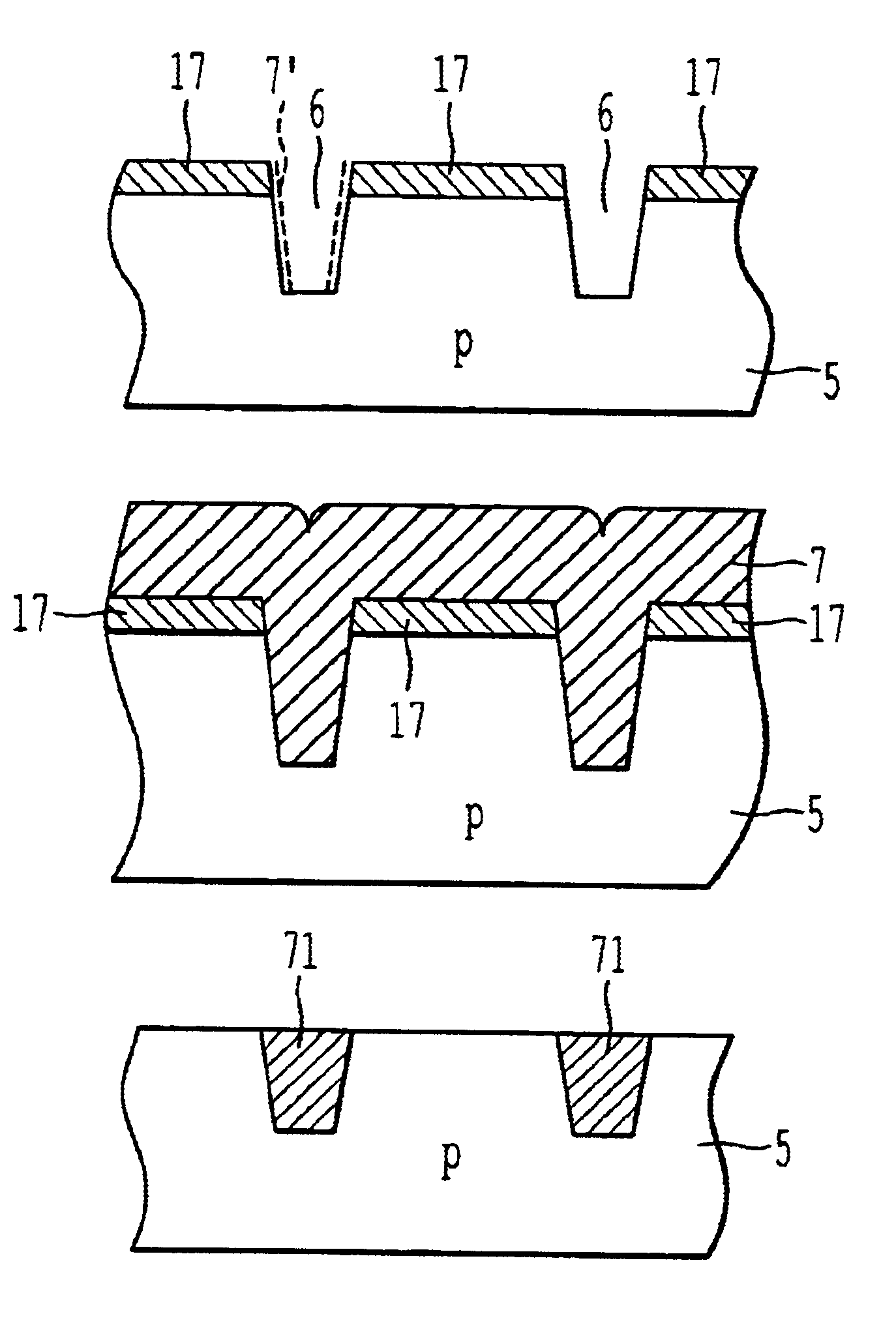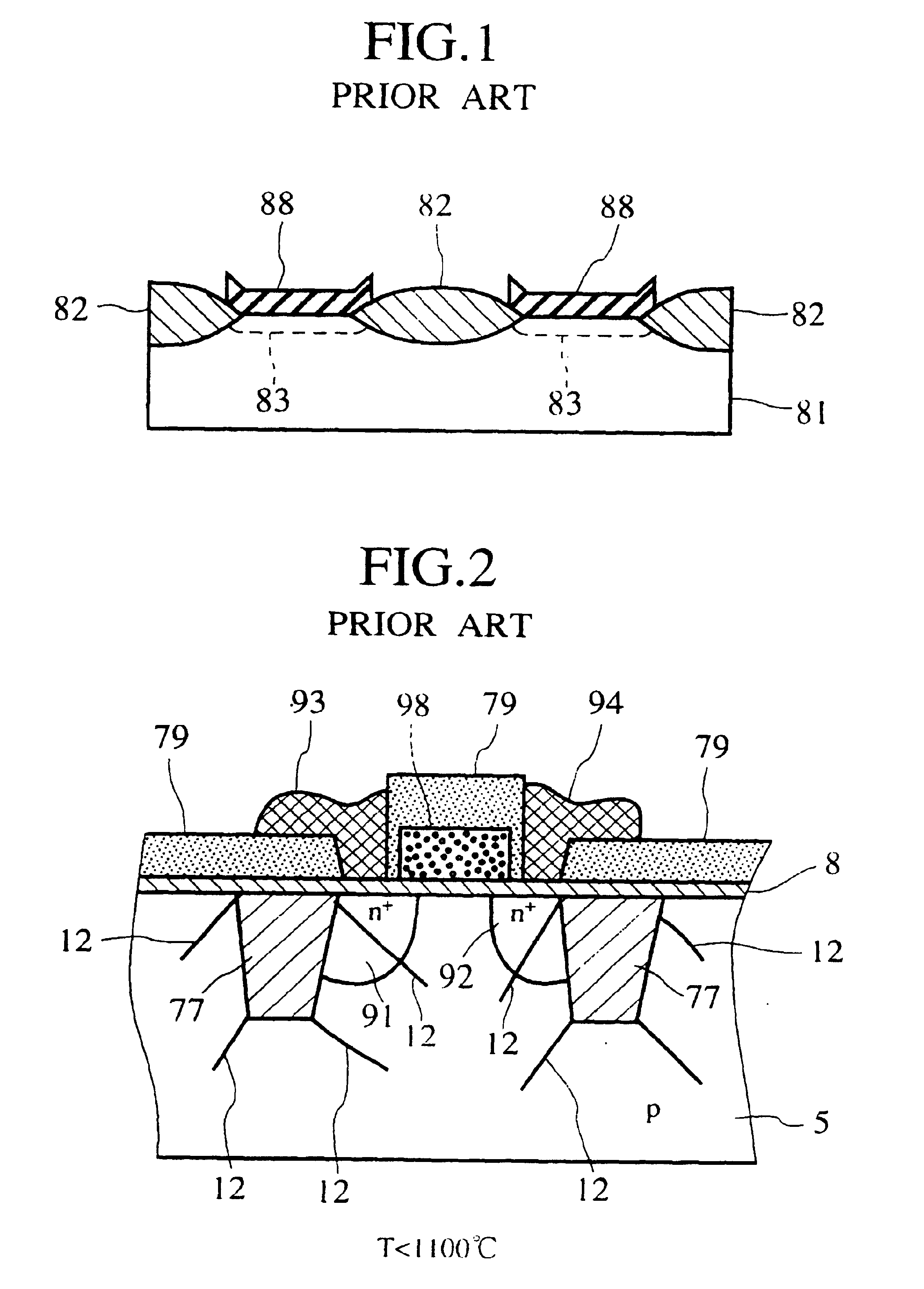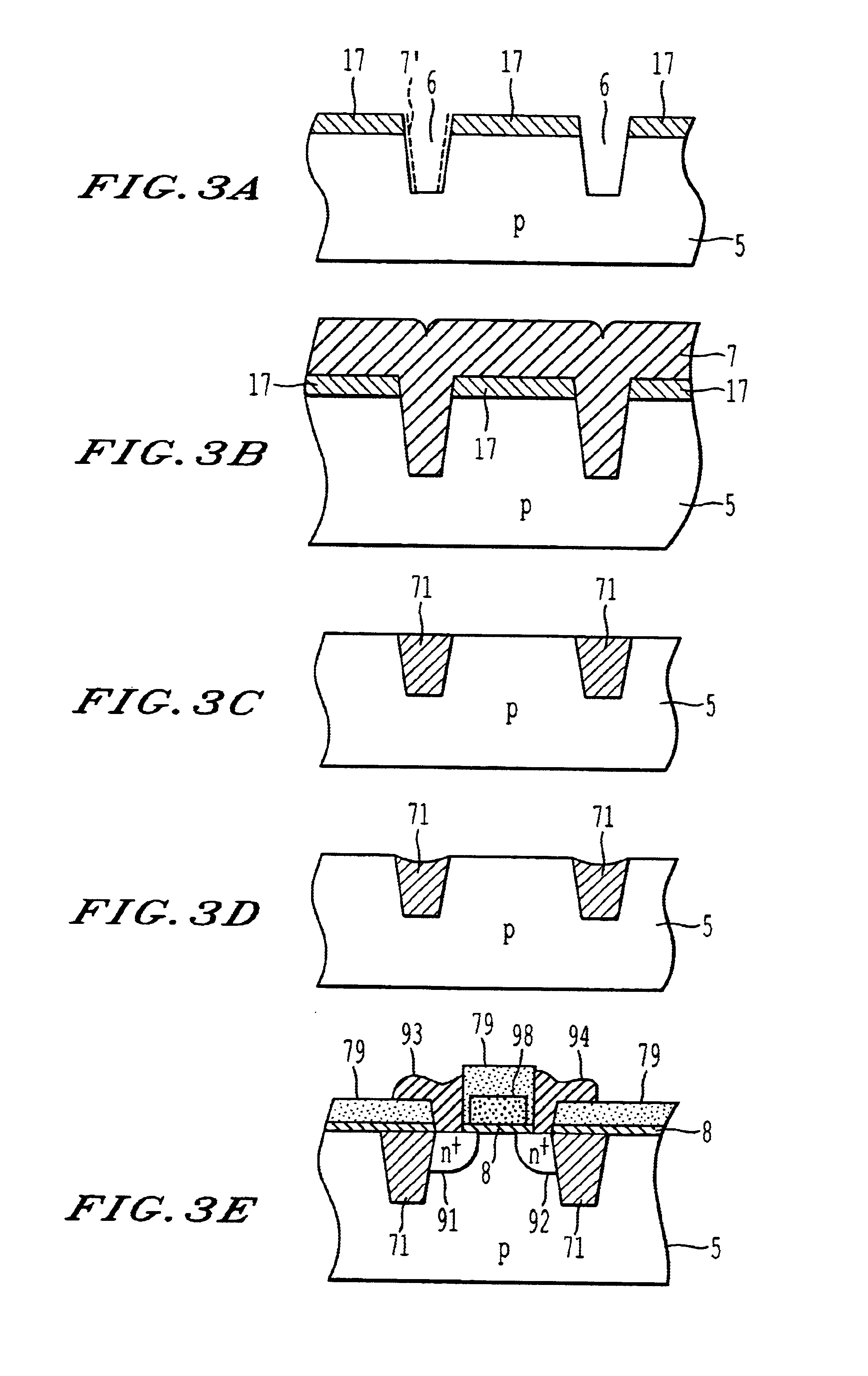Method of manufacturing a substrate having shallow trench isolation
a technology of integrated circuit and substrate, which is applied in the direction of semiconductor/solid-state device manufacturing, basic electric elements, electric devices, etc., can solve the problems of difficult annealing at such extremely high temperature, difficult to be constituted reaction tubes, etc., and achieve high integration density and reduce the generation of crystalline defects in the device region
- Summary
- Abstract
- Description
- Claims
- Application Information
AI Technical Summary
Benefits of technology
Problems solved by technology
Method used
Image
Examples
first embodiment
[0064](First Embodiment)
[0065]FIG. 3E shows a sectional structure of buried element isolation semiconductor substrate, or shallow trench element isolation (STI) semiconductor substrate for MOS integrated circuit according to a first embodiment of the present invention. FIGS. 3A to 3D are cross-sectional views showing manufacturing steps to come up to the final structure shown in FIG. 3E. In the element isolation semiconductor substrate according to the first embodiment of the present invention, buried oxide films 71 are formed in the grooves 6 at a surface of the semiconductor substrate 5, as shown in FIG. 3E, and a MOS transistor having an n+ source region 91, an n+ drain region 92, a gate oxide film 8, a polysilicon gate electrode 98, a source electrode 93, a drain electrode 94, and an interlayer insulating film 79 is formed in the device region sandwiched in between the buried oxide films 71, 71.
[0066]In the MOS integrated circuit formed in the element isolation semiconductor sub...
second embodiment
[0080](Second Embodiment)
[0081]FIG. 8F is a cross-sectional view showing a structure of an element isolation semiconductor substrate for use in a bipolar integrated circuit according to a second embodiment of the present invention. FIGS. 8A to 8E are schematic cross-sectional views showing steps for manufacturing the semiconductor substrate having the final structure shown in FIG. 8F. A method of manufacturing the element isolation semiconductor substrate for use in the bipolar integrated circuit according to the second embodiment of the present invention comprises following steps.
[0082](a) First, as shown in FIG. 8A, a 200 to 350 nm thick SiO2 film 14 is formed on a surface of a p type silicon substrate 13 by means of steam oxidation.
[0083](b) Then, as shown in FIG. 8B, a surface of part of the silicon substrate 13 is exposed by patterning SiO2 film 14 by virtue of photolithography using photoresist as a mask to form a diffusion mask 14. An n+ buried layer 15 is then formed by ther...
third embodiment
[0089](Third Embodiment)
[0090]FIG. 10G is a cross-sectional view showing a element isolation semiconductor substrate according to a third embodiment of the present invention. FIGS. 10A to 10G are schematic cross-sectional views showing a manufacturing method to achieve the final structure in FIG. 10G. Although a case will be explained in the third embodiment of the present invention where the present invention is applied to a BiCMOS integrated circuit, it is a matter of course that the present invention may be applied to MOS integrated circuit, bipolar integrated circuit, static induction transistor (SIT) integrated circuit, or the like. A method of manufacturing a semiconductor substrate for BiCMOS integrated circuit according to the third embodiment of the present invention will be explained hereinbelow.
[0091](a) First, as shown in FIG. 10A, on a surface of an n type silicon substrate 23 having predetermined face orientation such as (100) face, a 1 μm thick SiO2 film 24 is formed ...
PUM
 Login to View More
Login to View More Abstract
Description
Claims
Application Information
 Login to View More
Login to View More - R&D
- Intellectual Property
- Life Sciences
- Materials
- Tech Scout
- Unparalleled Data Quality
- Higher Quality Content
- 60% Fewer Hallucinations
Browse by: Latest US Patents, China's latest patents, Technical Efficacy Thesaurus, Application Domain, Technology Topic, Popular Technical Reports.
© 2025 PatSnap. All rights reserved.Legal|Privacy policy|Modern Slavery Act Transparency Statement|Sitemap|About US| Contact US: help@patsnap.com



